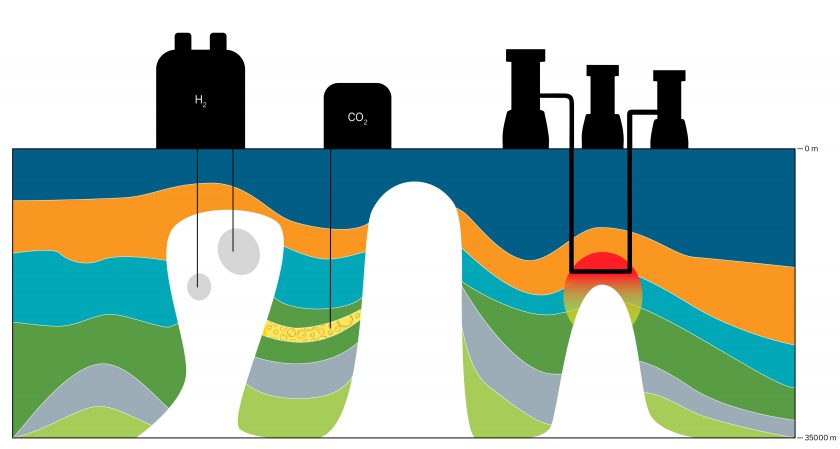Salt Could Play Key Role in Energy Transition
December 12, 2023

A common ingredient — salt — could have a big role to play in the energy transition to lower-carbon energy sources, according to a study led by the Bureau of Economic Geology.
The study describes how large underground salt deposits could serve as hydrogen holding tanks, conduct heat to geothermal plants, and influence carbon dioxide (CO2) storage. It also highlights how industries with existing salt expertise, such as solution mining, salt mining, and oil and gas exploration, could help.
“We see potential in applying knowledge and data gained from many decades of research, hydrocarbon exploration, and mining in salt basins to energy transition technologies,” said lead author Oliver Duffy, a research scientist at the bureau. The study was published in the journal Tektonika.
Salt has an influential role in shaping Earth’s subsurface layers. It is easily squeezed by geologic forces into complex and massive deposits, with some subsurface salt structures taller than Mount Everest. These structures and their surrounding geology offer a number of opportunities for energy development and emissions management, said study co-author Lorena Moscardelli, director of the bureau’s State of Texas Advanced Resource Recovery (STARR) program, which funded the research. “The co-location of surface infrastructure, renewable energy potential, favorable subsurface conditions and proximity to markets is key to plan for subsurface hydrogen storage,” she said. “STARR is currently engaged with emerging energy opportunities in West Texas that involve hydrogen and carbon capture, utilization and storage potential for the region.”
According to the paper, salt could help grow hydrogen power by serving as a holding pen for hydrogen gas. Salt domes are proven containers for hydrogen used by oil refineries and the petrochemical industry. But hydrogen bound for energy production faces different conditions, such as increased storage volumes and more frequent input and output of the gas from storage caverns. The study calls for more research on hydrogen storage in salt formations under these conditions.
Salt caverns are not a good option for CO2 storage for myriad reasons — from economic, to long-term leakage risks, to the sheer magnitude of CO2 that needs to be stored. But the rock formations surrounding the salt domes are a different story. They are made of porous rock that can safely accommodate large volumes of CO2, which could allow for co-locating hydrogen production from natural gas and CO2 storage. The Texas Gulf Coast is particularly well suited for this type of combined production and storage, according to the researchers.
The study also touches on how salt can aid in the adoption of next-generation geothermal technology. Co-authors include current and former bureau researchers Michael Hudec, Frank Peel, Gillian Apps, Alex Bump, Tim Dooley, Naiara Fernandez, Shuvajit Bhattacharya, Ken Wisian and Mark Shuster.
Back to the Newsletter